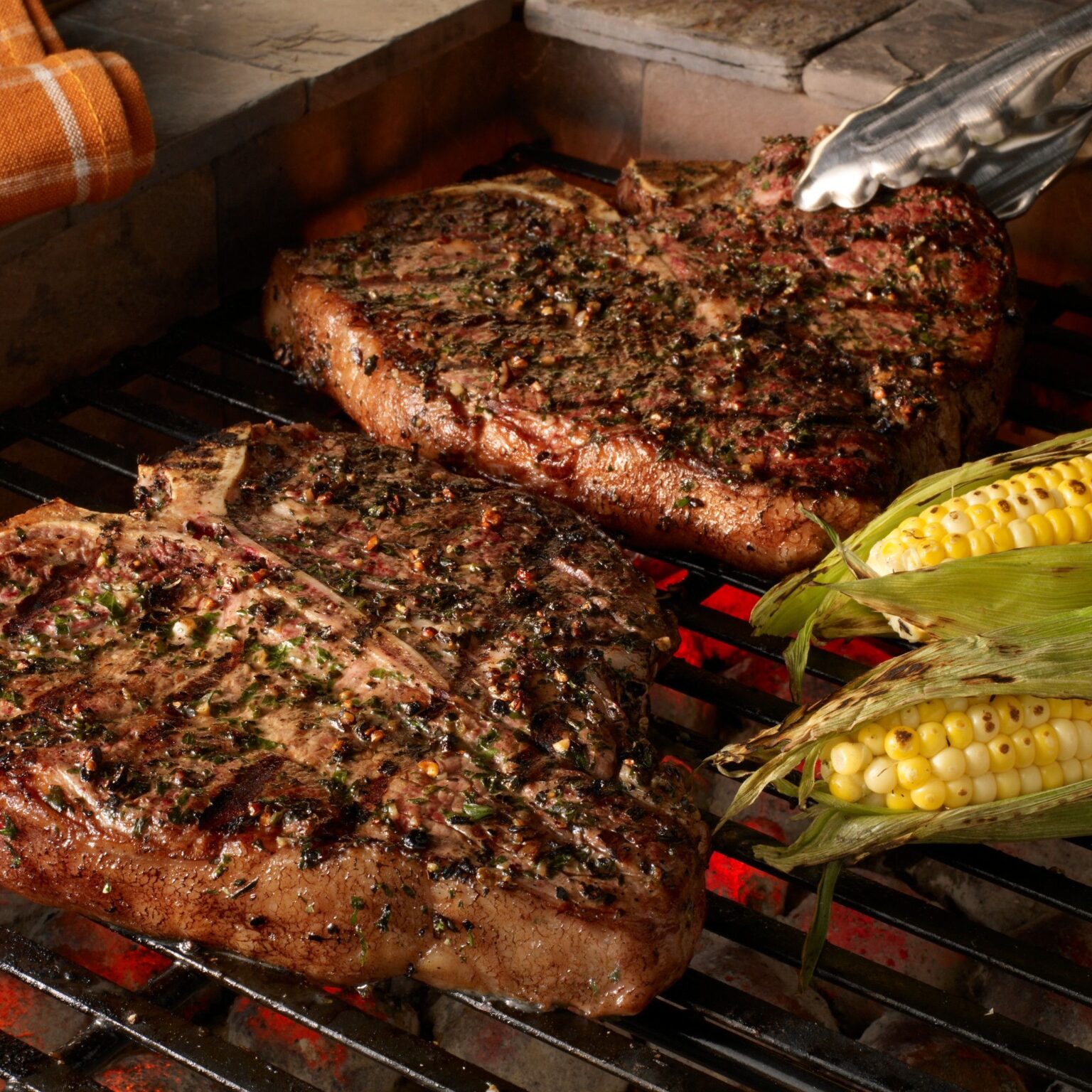By Amy Myrdal Miller, MS, RDN, FAND
DISCLOSURE: This post is a collaboration with Beef. It’s What’s for Dinner., on behalf of the Beef Checkoff, as part of my role as a compensated member of the Beef Expert Bureau.
When I was growing up on our family farm in northeast North Dakota the only reliable television channel was the local PBS affiliate. Cartoons were not part of my childhood but watching Julia Child on the French Chef certainly was. Julia was an influential role model for me, inspiring my interest in food, flavor, cuisine, and culinary techniques. In addition to collecting her cookbooks, I’ve also read every biography ever written about her. One of my favorite Julia quotes is, “Find something you’re passionate about and keep tremendously interested in it”, a sentiment that perfectly captures my interest in food and how its produced.
Another influential role model for me was my dad. In the 1970s, our farm included a large cow-calf operation. Talking about the cattle was a daily occurrence at the dinner and supper table. My dad would often comment on the quality of the beef my mom prepared, noting flavor differences in beef from steers slaughtered in the spring versus the fall. The spring steers had spent their winter in a feedlot, eating dry hay and fermented corn silage. The fall steers had enjoyed their summer grazing on pastures filled with native prairie grasses. My dad’s obsession with the influences on beef quality and flavor became something I’m tremendously interested in.
So, what influences beef quality and flavor? I recently learned about the Beef Quality Assurance (BQA) program that trains and certifies farmers and ranchers on best practices and cattle management techniques. The goal is to ensure that animals and the environment are cared for within a standard set of guidelines overseen and regularly evaluated by an expert advisory group, including veterinarians, animal scientists, cattle nutritionists, and animal welfare experts.
The program, which began in the 1980s, has been widely adopted. Today more than 85 percent of beef produced in the U.S. comes from a farmer or rancher who has been BQA certified. Most packing plants that supply supermarkets and restaurant chains require that their beef comes from BQA certified farmers and ranchers.
The impact of the BQA program on the quality of beef available to supermarkets and restaurants is impressive. According to USDA, more than 80 percent of beef produced in the U.S. is graded Prime or Choice, the top tier grades for beef.
One of the BQA factors I most appreciate is that certification lasts three years; after that farmers and ranchers must become re-certified. Research on cattle management and environmental impact continues to evolve; the re-certification ensures farmers and ranchers have the most up-to-date information to make the best decisions for the animals and natural resources.
I was curious how quickly research reveals new best practices that can be included in BQA trainings. I asked Christine Navarre, DVM, MS, DACVIM, a Professor at the School of Animal Sciences at Louisiana State University (LSU) in Baton Rouge and an Extension Veterinarian with the LSU AgCenter, for her insights.
“Recent research on ‘fetal programming’—how nutrition and other stressors on cows impact calf development in utero—has revealed some very impactful new knowledge,” says Dr. Navarre. “We are learning how fetal programming impacts cattle health, growth, reproduction and quality grade. This information is allowing us to make better management decisions that improve the health and well-being of cattle and beef quality assurance.”
I smiled when Dr. Navarre said this. I know the same is true for humans; how pregnant women eat, react to stress, and whether they exercise, for example, all have an impact on future health outcomes for their children.
In my quest to learn more, I turned to another expert, someone who focuses his work on teaching and natural resource management. Rick Machen, PhD, is the Paul Genho Endowed Chairholder and Professor at the King Ranch Institute for Ranch Management at Texas A&M University-Kingsville.
“The BQA program is a great example of knowledge evolution and application across all segments of the beef industry,” says Professor Machen. “Beef quality is far more than degree of marbling and a quality eating experience. As a result of BQA efforts, we are more conscious natural resource stewards; stockmanship and animal welfare has improved; and the focus on preventative health management is reducing health issues and the need for treatment.”
Professor Machen closed our conversation by saying, “The BQA program has driven home the message and cattle managers have embraced the notion that they manage natural resources and animals to produce food—a responsibility they and consumers alike take seriously.”
I appreciate Professor Machen last statement so much; it reminds me of the values my dad held dear. He would often say, “We take good care of the land and good care of our cattle.” It doesn’t surprise me that farmers and ranchers across this country embrace those same values.
Finally, I love knowing that whether I’m buying lean cuts of Choice beef or splurging on a Prime New York Steak for a special occasion, the quality goes beyond the grading to how the cattle and environmental resources were managed. I only wish I could discuss this topic over a great steak dinner with Julia; I know we’d have a spirited conversation about issues we’re passionate about and tremendously interested in!

